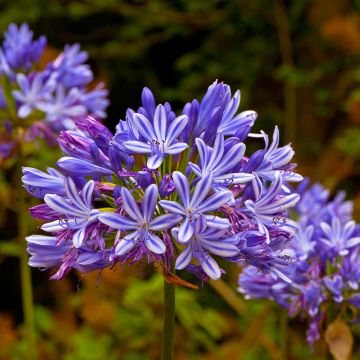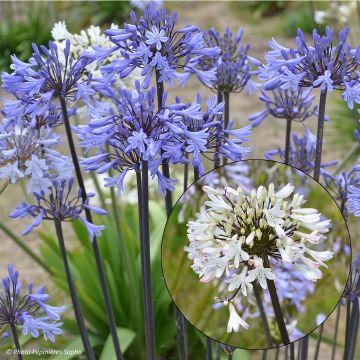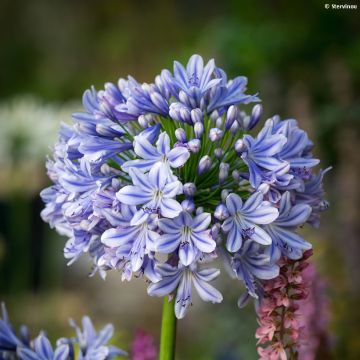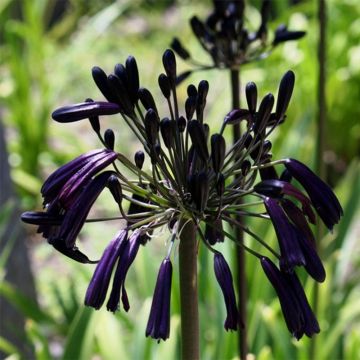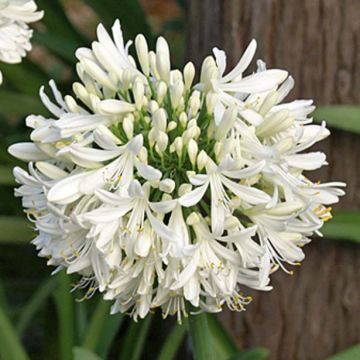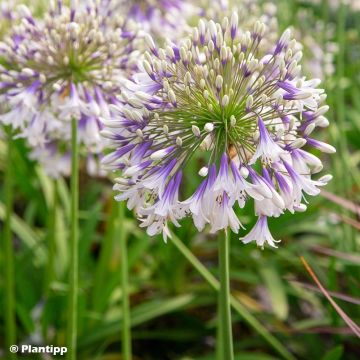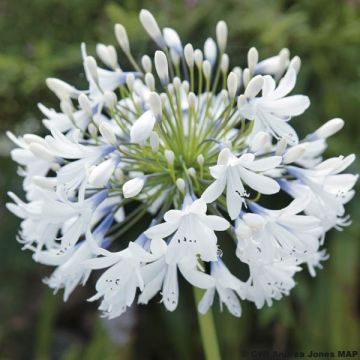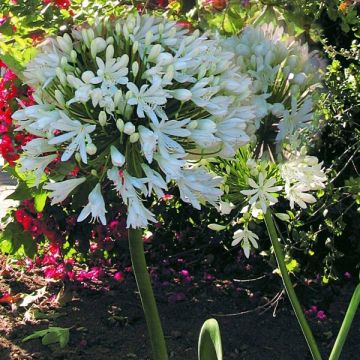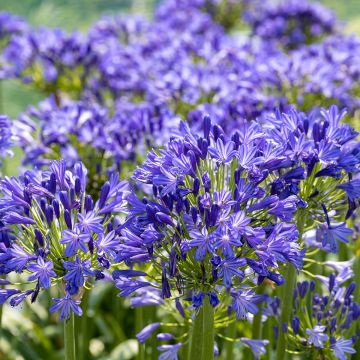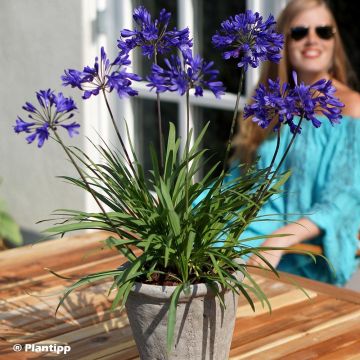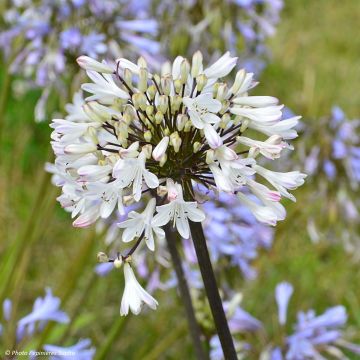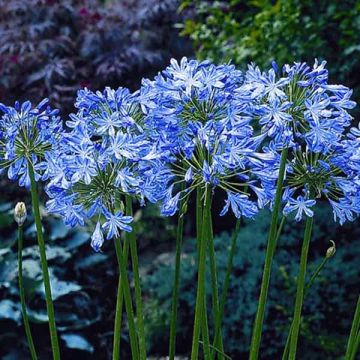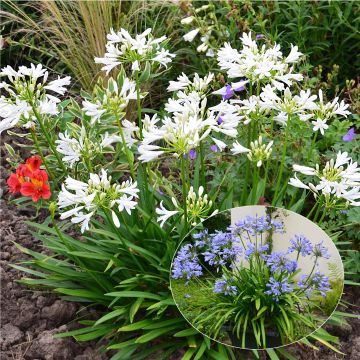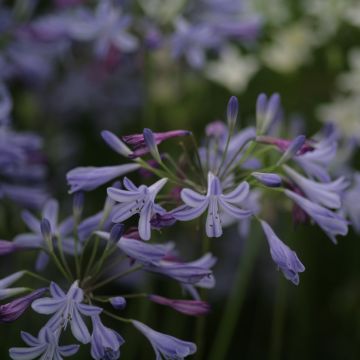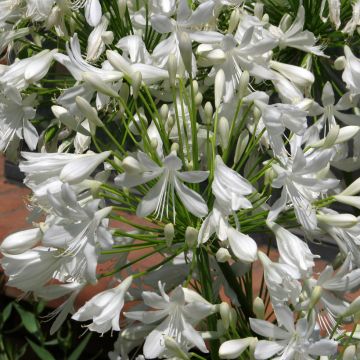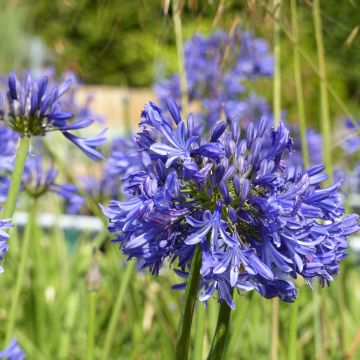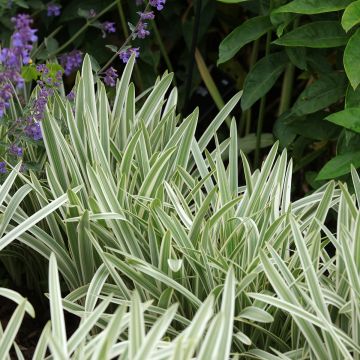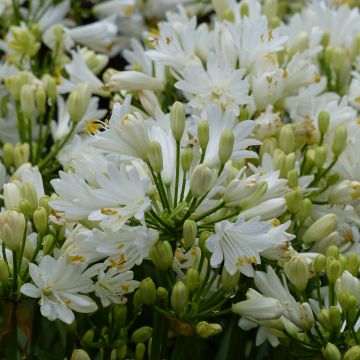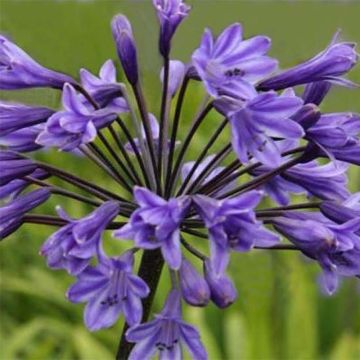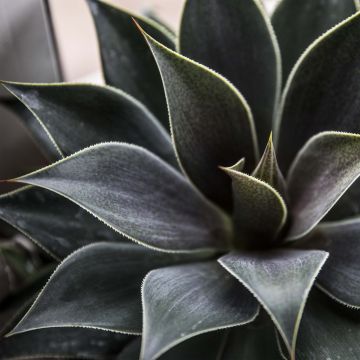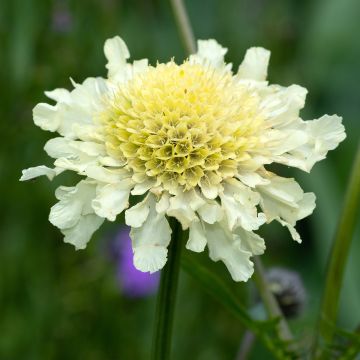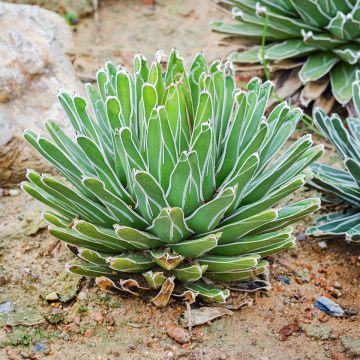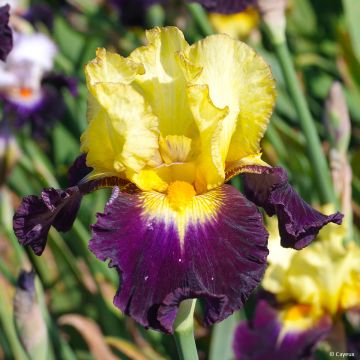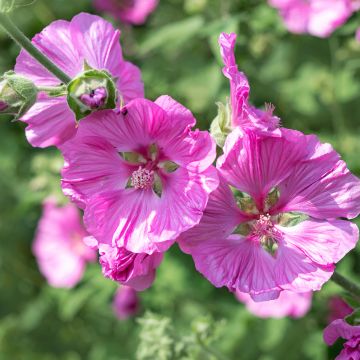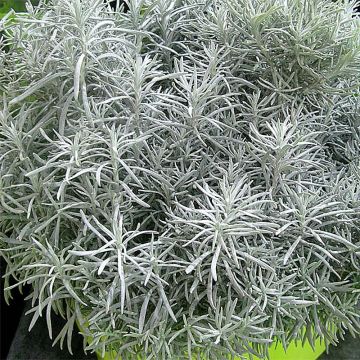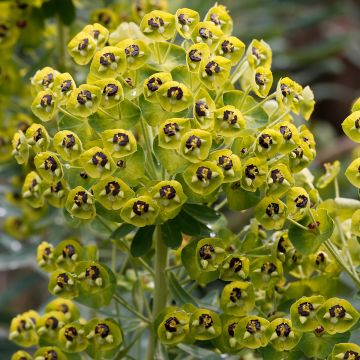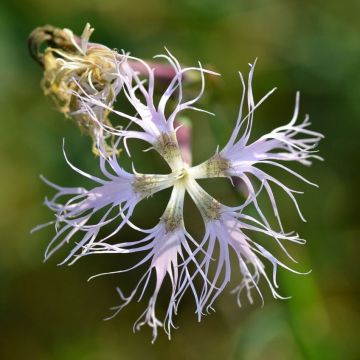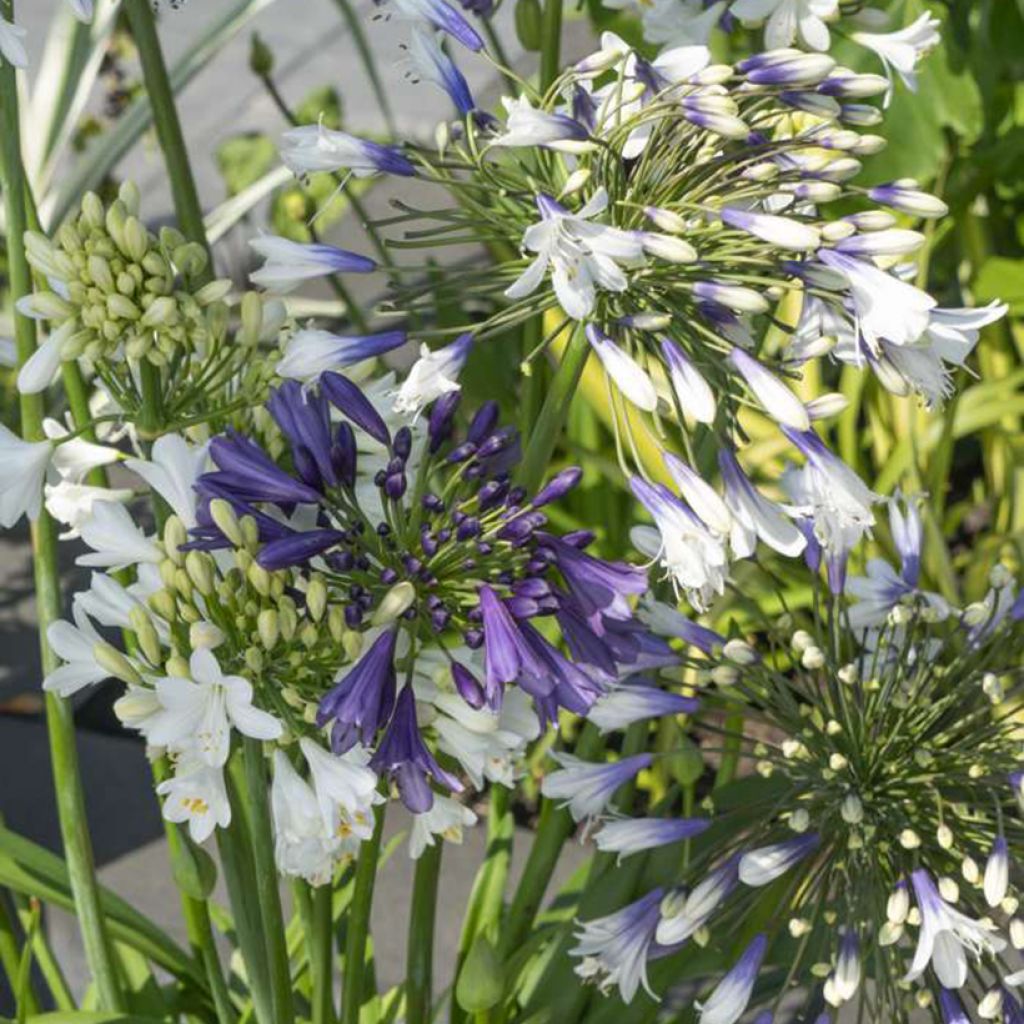

Agapanthus Three Sisters ( Everwhite, Popinpurple, Fireworks)
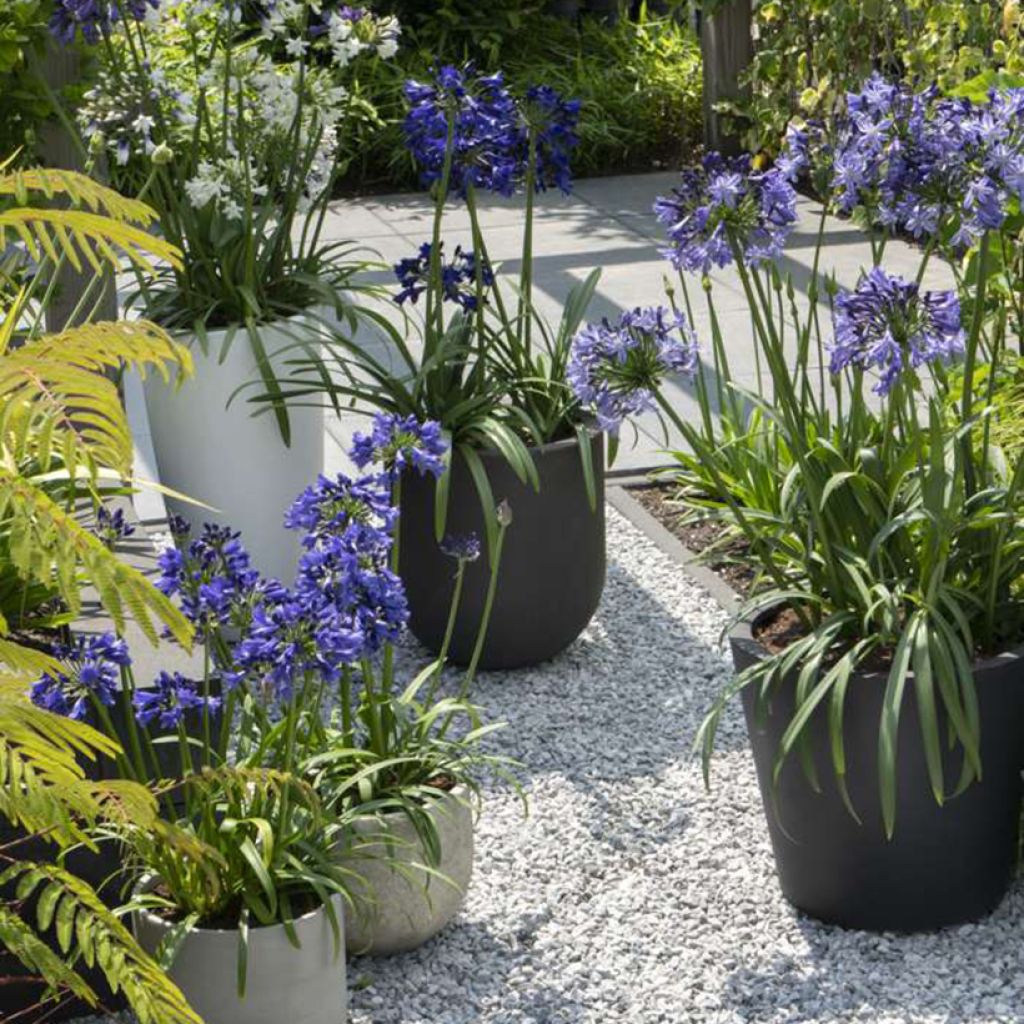

Agapanthus Three Sisters ( Everwhite, Popinpurple, Fireworks)
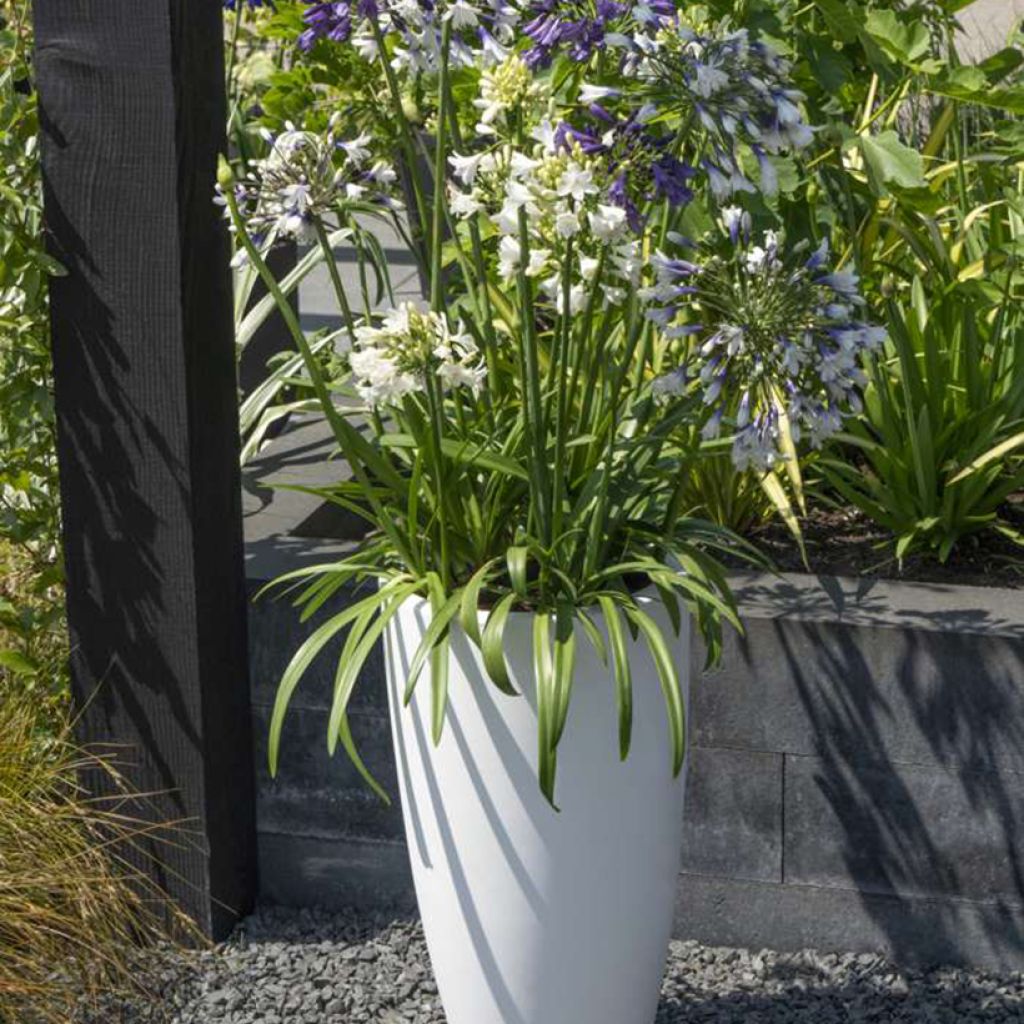

Agapanthus Three Sisters ( Everwhite, Popinpurple, Fireworks)
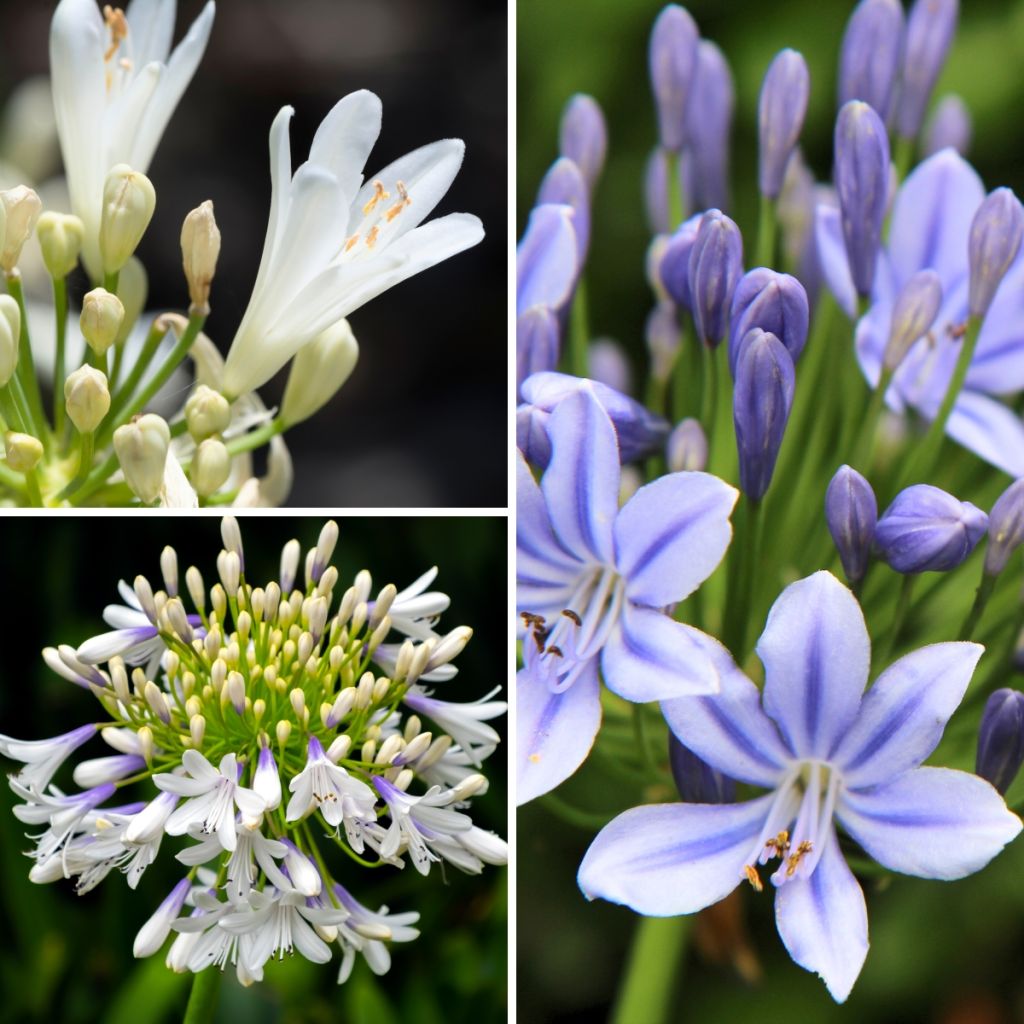

Agapanthus Three Sisters ( Everwhite, Popinpurple, Fireworks)
Agapanthus Three Sisters ( Everwhite, Popinpurple, Fireworks)
Agapanthus Three Sisters® (Everpanthus Everwhite, Popinpurple, Fireworks)
African Lily, Lily of the Nile
Why not try an alternative variety in stock?
View all →This plant carries a 12 months recovery warranty
More information
We guarantee the quality of our plants for a full growing cycle, and will replace at our expense any plant that fails to recover under normal climatic and planting conditions.
From €5.90 for pickup delivery and €6.90 for home delivery
Express home delivery from €8.90.
Does this plant fit my garden?
Set up your Plantfit profile →
Description
The Agapanthus Three Sisters is actually the combination of 3 cultivars of similar size and behaviour to enjoy 3 different types of flowers in a single plant. In this case, they are the Everpanthus Everwhite, Popinpurple, and Fireworks agapanthus. Very complementary, one has white flowers, another has intense violet flowers, while the third has two-tone flowers, deep blue at the base, and white at the tips. The whole belongs to a new line of hybrid Agapanthus that are quite exceptional, combining floribundity, original flower colour, robustness, and rapid growth. Considered as a single plant, its inflorescences, of a good size, bloom in large numbers for several weeks, from late spring to the end of summer, including on young plants, at the end of short stems, unaffected by the wind. Not very tall, but generous, this variety easily finds its place in all gardens, or in a pot on the terrace. Despite its exotic charm as an austral plant, it is a carefree agapanthus that thrives in full sun, in ordinary, but well-drained soil, remaining slightly moist in summer.
Agapanthus are plants of the lily family originating from South Africa. Several species have been extensively hybridized by horticulturists in search of new colours, more compact and hardier plants, better adapted to our climates. In addition to their ornamental qualities, they stand out for their rapid growth, their perpetual flowering, and their resistance to bacterial rot of the neck, which sometimes affects Agapanthus in wet soil. Three Sisters develops and multiplies rapidly from a stump with fleshy rhizomes, forming from spring onwards a dense clump of linear foliage, of a shiny dark green colour, with a minimum diameter of 40-50cm (16-20in), expanding over time. Flowering often begins in June (depending on the climate) and continues until August-September if the soil remains moist. Numerous sturdy flowering stems, 50-60cm (20-24in) high, emerge from a tightly packed clump of foliage. They bear at their tips hemispherical umbels of 10-12cm (4-5in) in diameter, composed of numerous small campanulate flowers in the shape of flared trumpets. Each one is composed of 6 petals fused at the base, light blue in colour, crossed by a fine line of darker violet. The foliage of this variety disappears in winter, it is deciduous. Its colour is a fairly dark, shiny green.
The Agapanthus Three Sisters will quickly become the new star of the garden, with its unprecedented inflorescences, like a brilliantly coloured bouquet that blooms for weeks. In addition to its generous flowering, it has a decent hardiness, down to about -10 to -12°C (14 to 10.4°F). This variety will bring an elegant and exotic touch to any setting. It will easily adapt to many regions that are not too cold, especially if its stump is protected by a thick winter mulch. Whether in flower beds, borders, large rockeries, pots, or containers, Agapanthus is suitable for a wide range of uses. It is particularly well-suited to mild coastal climates. Three Sisters is very beautiful when combined with other compact blue, violet, mauve, or white varieties in a clean design for even more mixed flowers. It is also very decorative in flower beds with an exotic touch, with Tubalghias, Kniphofias, Hemerocallises, grasses, and Cannas.
Report an error about the product description
Agapanthus Three Sisters ( Everwhite, Popinpurple, Fireworks) in pictures
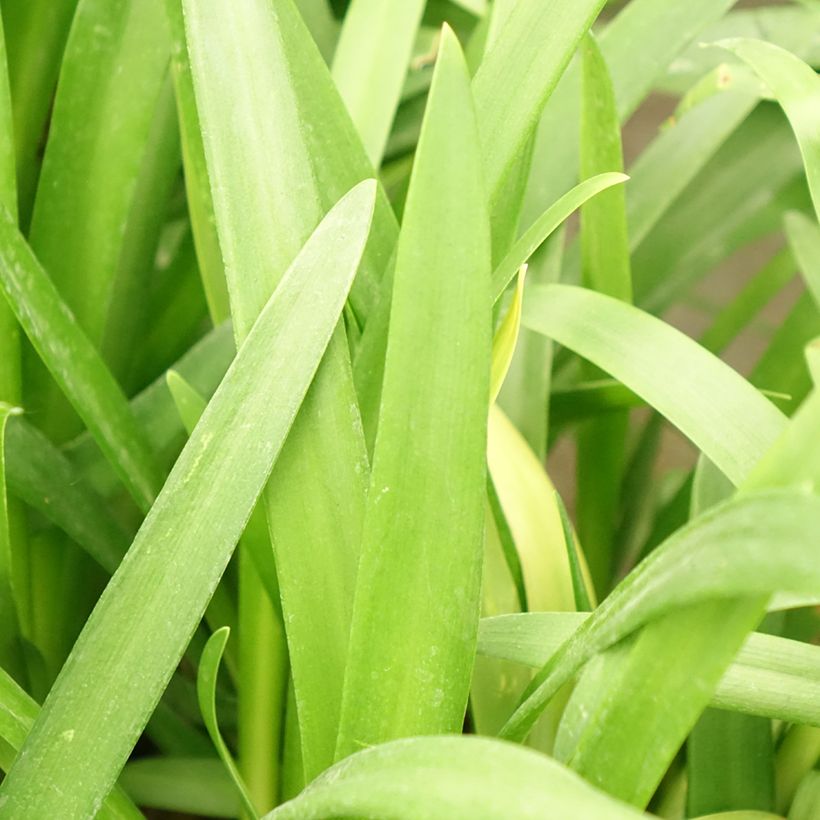



Flowering
Foliage
Plant habit
Botanical data
Agapanthus
Three Sisters® (Everpanthus Everwhite, Popinpurple, Fireworks)
Alliaceae - Liliaceae
African Lily, Lily of the Nile
Cultivar or hybrid
Other Agapanthus - Lily of the Nile
Planting and care
Plant Agapanthus stumps by covering them with at least 10cm (4in) of good soil, as this helps them withstand the cold better. It is essential to install them in spring and preferable to mulch them in winter in most of our regions. Shelter your pots in winter. They prefer a rich and moist, but well-drained soil, enriched with sand. Water them regularly during the growth period (twice a week). However, avoid watering them afterwards. They are sensitive to excess moisture in winter. This variety is hardy up to approximately -10°C (14°F) in a sheltered position, and it thrives particularly well in border plantings and containers. Use a well-drained sandy mix, slightly acidic. This plant seems to prefer shallow, but wide containers, and will flower abundantly if regularly fed with slow-release fertilizer.
Planting period
Intended location
Care
This item has not been reviewed yet - be the first to leave a review about it.
Mediterranean perennials
Haven't found what you were looking for?
Hardiness is the lowest winter temperature a plant can endure without suffering serious damage or even dying. However, hardiness is affected by location (a sheltered area, such as a patio), protection (winter cover) and soil type (hardiness is improved by well-drained soil).

Photo Sharing Terms & Conditions
In order to encourage gardeners to interact and share their experiences, Promesse de fleurs offers various media enabling content to be uploaded onto its Site - in particular via the ‘Photo sharing’ module.
The User agrees to refrain from:
- Posting any content that is illegal, prejudicial, insulting, racist, inciteful to hatred, revisionist, contrary to public decency, that infringes on privacy or on the privacy rights of third parties, in particular the publicity rights of persons and goods, intellectual property rights, or the right to privacy.
- Submitting content on behalf of a third party;
- Impersonate the identity of a third party and/or publish any personal information about a third party;
In general, the User undertakes to refrain from any unethical behaviour.
All Content (in particular text, comments, files, images, photos, videos, creative works, etc.), which may be subject to property or intellectual property rights, image or other private rights, shall remain the property of the User, subject to the limited rights granted by the terms of the licence granted by Promesse de fleurs as stated below. Users are at liberty to publish or not to publish such Content on the Site, notably via the ‘Photo Sharing’ facility, and accept that this Content shall be made public and freely accessible, notably on the Internet.
Users further acknowledge, undertake to have ,and guarantee that they hold all necessary rights and permissions to publish such material on the Site, in particular with regard to the legislation in force pertaining to any privacy, property, intellectual property, image, or contractual rights, or rights of any other nature. By publishing such Content on the Site, Users acknowledge accepting full liability as publishers of the Content within the meaning of the law, and grant Promesse de fleurs, free of charge, an inclusive, worldwide licence for the said Content for the entire duration of its publication, including all reproduction, representation, up/downloading, displaying, performing, transmission, and storage rights.
Users also grant permission for their name to be linked to the Content and accept that this link may not always be made available.
By engaging in posting material, Users consent to their Content becoming automatically accessible on the Internet, in particular on other sites and/or blogs and/or web pages of the Promesse de fleurs site, including in particular social pages and the Promesse de fleurs catalogue.
Users may secure the removal of entrusted content free of charge by issuing a simple request via our contact form.
The flowering period indicated on our website applies to countries and regions located in USDA zone 8 (France, the United Kingdom, Ireland, the Netherlands, etc.)
It will vary according to where you live:
- In zones 9 to 10 (Italy, Spain, Greece, etc.), flowering will occur about 2 to 4 weeks earlier.
- In zones 6 to 7 (Germany, Poland, Slovenia, and lower mountainous regions), flowering will be delayed by 2 to 3 weeks.
- In zone 5 (Central Europe, Scandinavia), blooming will be delayed by 3 to 5 weeks.
In temperate climates, pruning of spring-flowering shrubs (forsythia, spireas, etc.) should be done just after flowering.
Pruning of summer-flowering shrubs (Indian Lilac, Perovskia, etc.) can be done in winter or spring.
In cold regions as well as with frost-sensitive plants, avoid pruning too early when severe frosts may still occur.
The planting period indicated on our website applies to countries and regions located in USDA zone 8 (France, United Kingdom, Ireland, Netherlands).
It will vary according to where you live:
- In Mediterranean zones (Marseille, Madrid, Milan, etc.), autumn and winter are the best planting periods.
- In continental zones (Strasbourg, Munich, Vienna, etc.), delay planting by 2 to 3 weeks in spring and bring it forward by 2 to 4 weeks in autumn.
- In mountainous regions (the Alps, Pyrenees, Carpathians, etc.), it is best to plant in late spring (May-June) or late summer (August-September).
The harvesting period indicated on our website applies to countries and regions in USDA zone 8 (France, England, Ireland, the Netherlands).
In colder areas (Scandinavia, Poland, Austria...) fruit and vegetable harvests are likely to be delayed by 3-4 weeks.
In warmer areas (Italy, Spain, Greece, etc.), harvesting will probably take place earlier, depending on weather conditions.
The sowing periods indicated on our website apply to countries and regions within USDA Zone 8 (France, UK, Ireland, Netherlands).
In colder areas (Scandinavia, Poland, Austria...), delay any outdoor sowing by 3-4 weeks, or sow under glass.
In warmer climes (Italy, Spain, Greece, etc.), bring outdoor sowing forward by a few weeks.

































